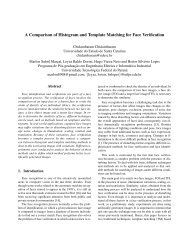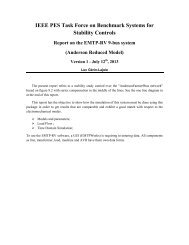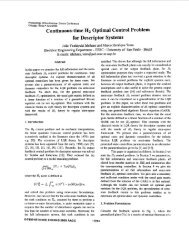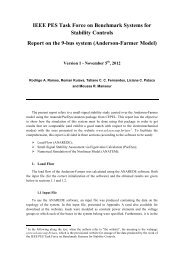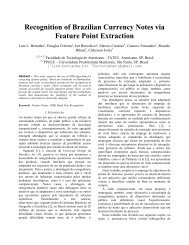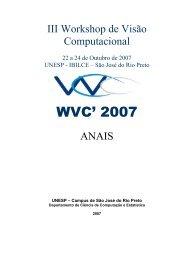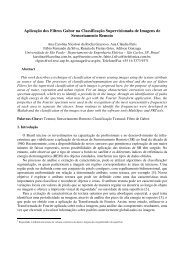The Ethics of Banking: Conclusions from the Financial Crisis (Issues ...
The Ethics of Banking: Conclusions from the Financial Crisis (Issues ...
The Ethics of Banking: Conclusions from the Financial Crisis (Issues ...
Create successful ePaper yourself
Turn your PDF publications into a flip-book with our unique Google optimized e-Paper software.
122 9 <strong>Financial</strong> Wagers, Hyper-Speculation and Shareholder Primacy<br />
necessary part <strong>of</strong> an experimental process, in which even <strong>the</strong> less successful attempt<br />
yields a knowledge-enlarging effect. In <strong>the</strong> developmental wager, both wagering<br />
approaches are integral to <strong>the</strong> necessary development process and its costs. Value is<br />
always added, not only by successful wagers but also by <strong>the</strong> less successful ones.<br />
<strong>The</strong> Productive and <strong>the</strong> Unproductive Wager on Derivatives<br />
In <strong>the</strong> case <strong>of</strong> unproductive wagers, it is less clear how much value is added. <strong>The</strong><br />
underlying wager generates no new knowledge. <strong>The</strong>refore <strong>the</strong> loss <strong>of</strong> <strong>the</strong> wager<br />
represents a cost only. <strong>The</strong> writer who sells an option for hedging creates more certainty<br />
for <strong>the</strong> option buyer, for which <strong>the</strong> latter pays an option fee. If <strong>the</strong> conditions<br />
specified in <strong>the</strong> option contract occur, <strong>the</strong> buyer’s need for certainty is satisfied. <strong>The</strong><br />
seller loses <strong>the</strong> wager, but keeps <strong>the</strong> option fee. Macro-economically, <strong>the</strong> risk is<br />
not reduced, just redistributed between option sellers and buyers. If <strong>the</strong> insured risk<br />
turns into an actual loss, <strong>the</strong> overall risk is not reduced by a gain in knowledge <strong>from</strong><br />
<strong>the</strong> wager but only reapportioned between <strong>the</strong> option seller and <strong>the</strong> option buyer.<br />
<strong>The</strong> option seller bears <strong>the</strong> risk minus <strong>the</strong> option fee, which remains as <strong>the</strong> residual<br />
risk with <strong>the</strong> option buyer. It can be useful to redistribute risk in this way. <strong>The</strong><br />
value that it adds is minimal, however. It becomes even more negligible if <strong>the</strong> risk<br />
is fur<strong>the</strong>r divided up among o<strong>the</strong>r option buyers, without any reduction <strong>of</strong> risk on<br />
<strong>the</strong> macro-economic level through a modification <strong>of</strong> behavior or new knowledge.<br />
Fur<strong>the</strong>r costs are <strong>the</strong> opportunity costs <strong>of</strong> time and attention to <strong>the</strong> option contracts.<br />
<strong>The</strong> added value <strong>of</strong> <strong>the</strong> option contracts is equally doubtful, because <strong>the</strong>y represent<br />
costs that are not matched by any macro-economic risk-reduction resulting <strong>from</strong> this<br />
option trading. Fur<strong>the</strong>rmore, if <strong>the</strong> consequence <strong>of</strong> this trading is a reduction <strong>of</strong> riskmonitoring,<br />
because individuals are less concerned about risk, additional damage is<br />
occasioned in <strong>the</strong> allocative efficiency <strong>of</strong> <strong>the</strong> economy.<br />
This process <strong>of</strong> de-monitoring risk by trading derivatives becomes particularly<br />
visible in <strong>the</strong> case <strong>of</strong> collateralized debt obligations. When <strong>the</strong> bank wants to pass<br />
on <strong>the</strong> credit risk to <strong>the</strong> investor, packaged as a CDO, in order to increase its capitalization<br />
or ratio <strong>of</strong> equity to balance sheet total, both <strong>the</strong> bank and <strong>the</strong> investor<br />
transfer <strong>the</strong> monitoring function to <strong>the</strong> rating agency that issues <strong>the</strong> rating for <strong>the</strong><br />
CDO. <strong>The</strong> rating agency does not, however, bear <strong>the</strong> risk <strong>of</strong> a mistaken rating; that<br />
remains with <strong>the</strong> investor. <strong>The</strong> rating agency has a minimal incentive to carry out due<br />
diligence, to fulfill <strong>the</strong> duty <strong>of</strong> care, while it is virtually impossible for <strong>the</strong> investor to<br />
do so, since he has no knowledge <strong>of</strong> <strong>the</strong> original debtor and has to rely on <strong>the</strong> assessments<br />
<strong>of</strong> <strong>the</strong> originator and <strong>the</strong> rating agency. It was also common for <strong>the</strong> bank to<br />
sell a securitized bond, a syn<strong>the</strong>tic CDO, to ano<strong>the</strong>r bank, <strong>from</strong> which it would go<br />
on to buy a similar syn<strong>the</strong>tic CDO. This, <strong>of</strong> all practices, is most obviously motivated<br />
by <strong>the</strong> interest in reducing <strong>the</strong> equity to balance sheet total requirement. <strong>The</strong><br />
transaction takes on attributes <strong>of</strong> self-dealing between <strong>the</strong> two banks. 3<br />
3 Cf. also POSNER (2009), p. 321.




